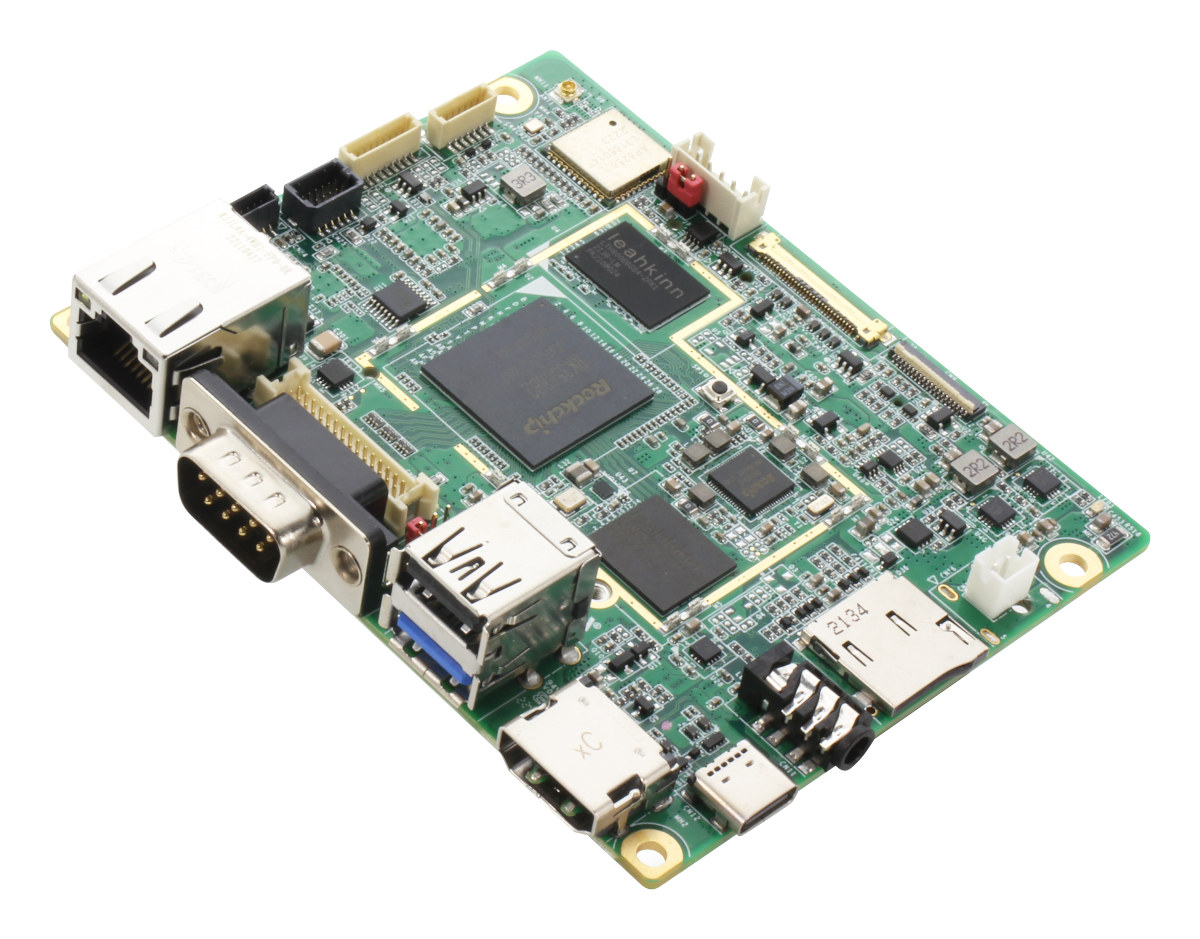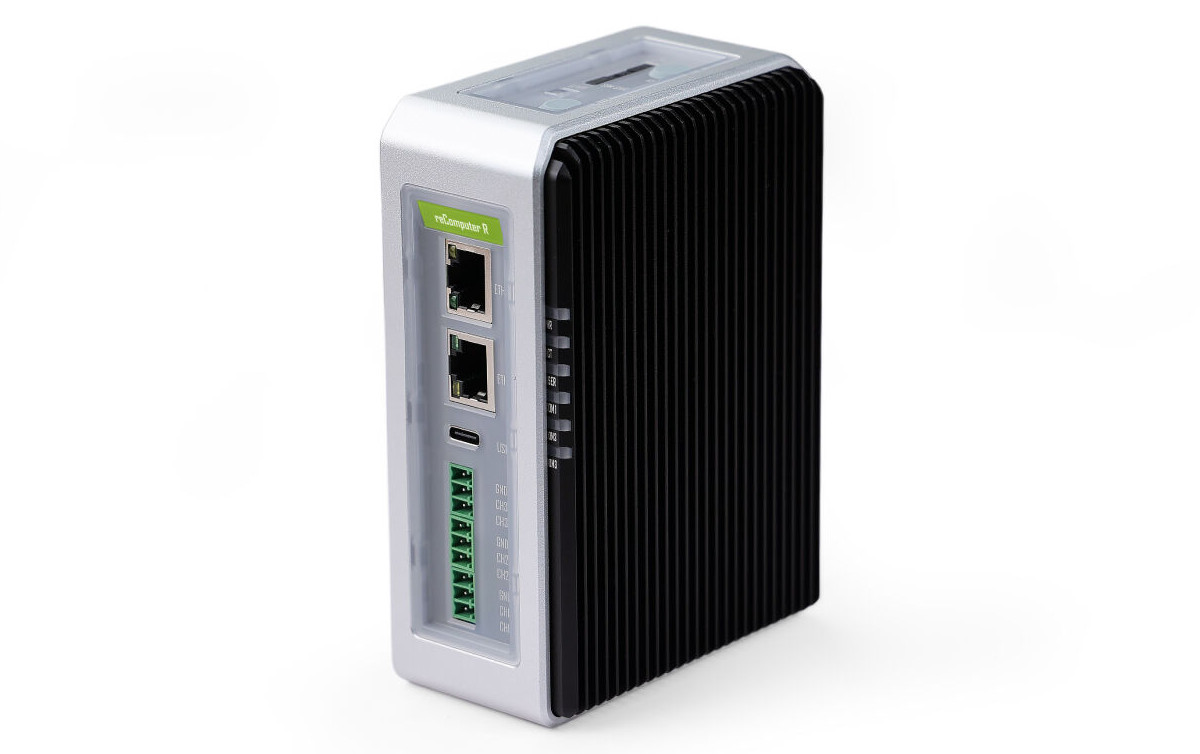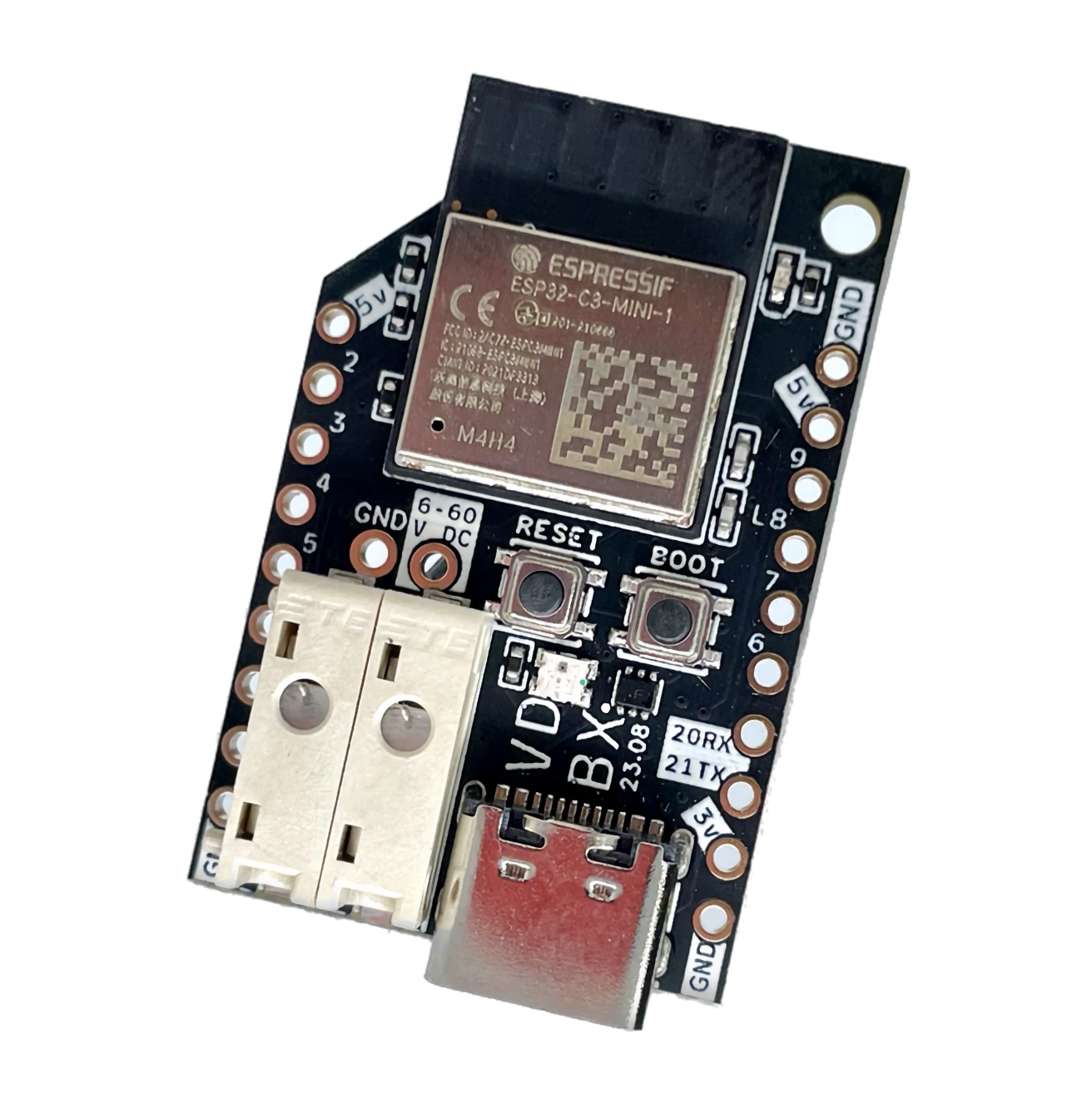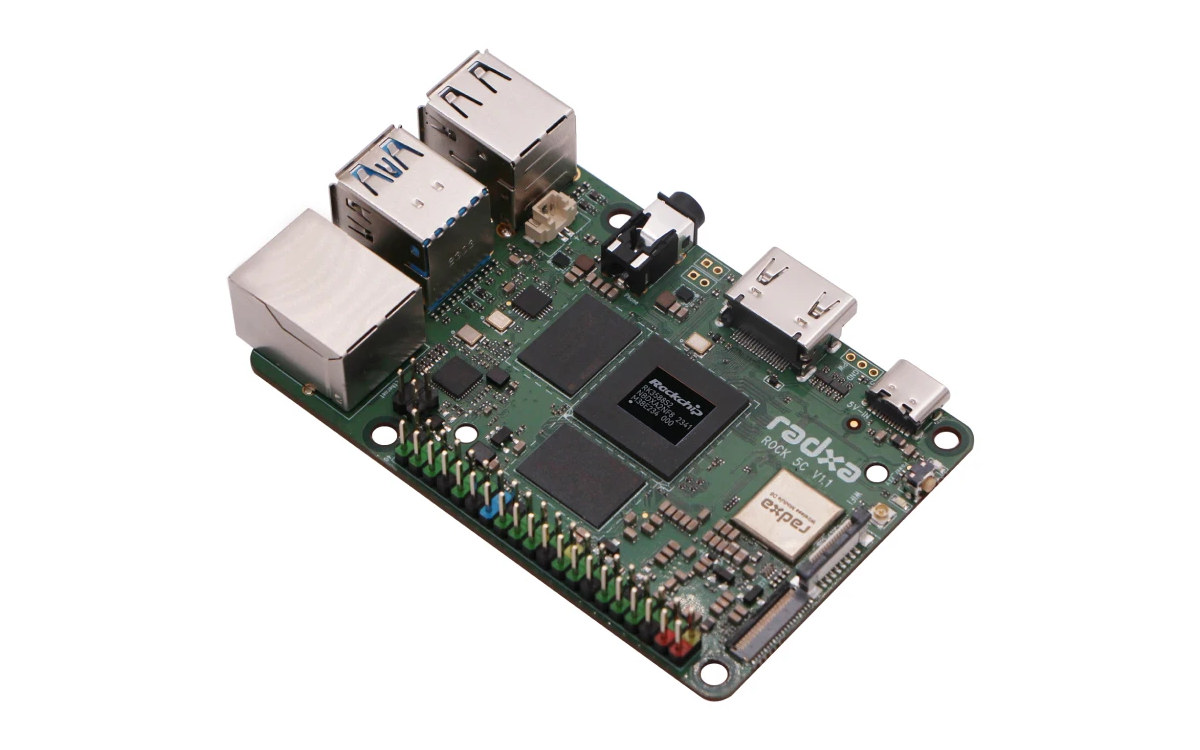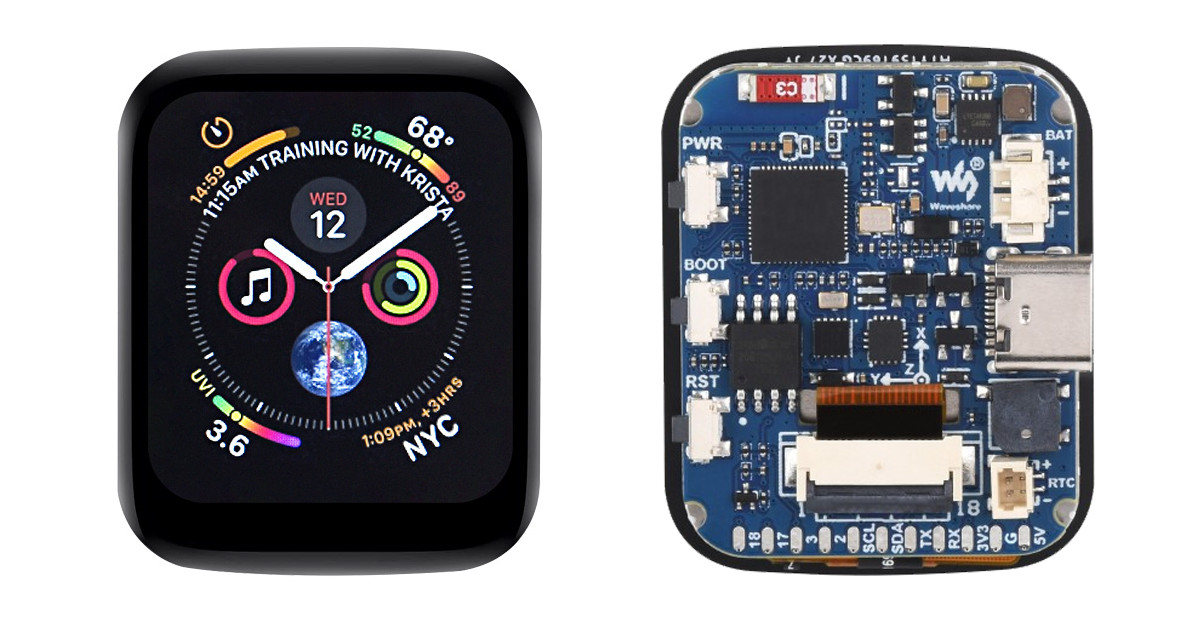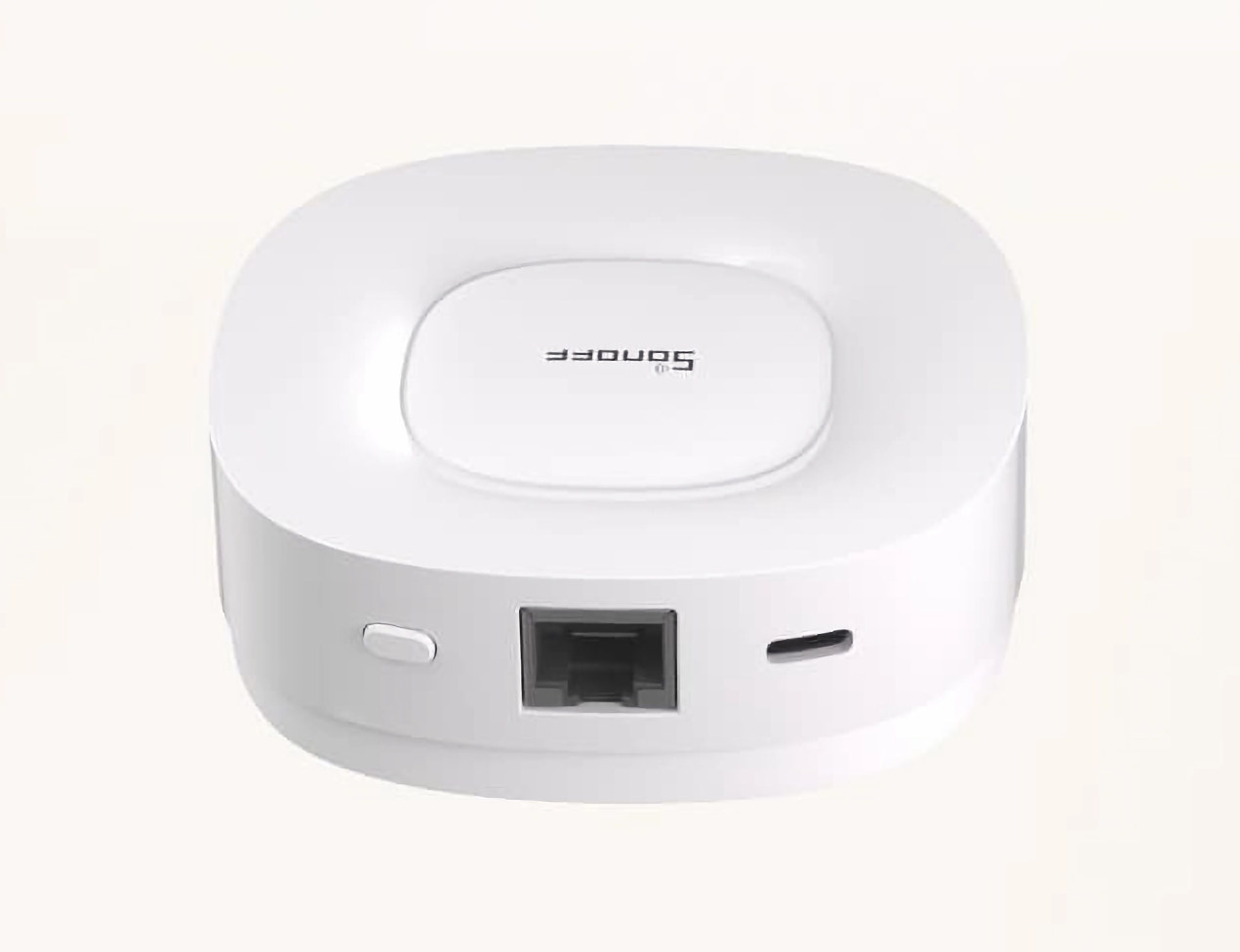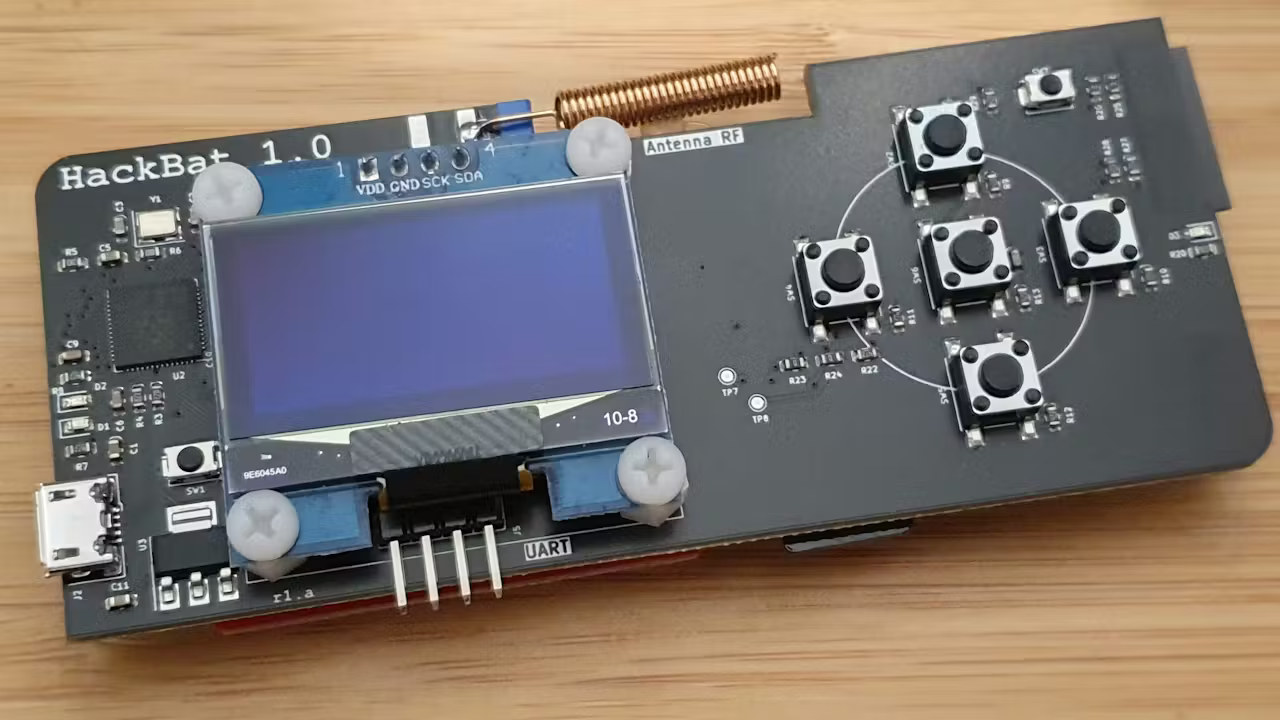AAEON RICO-3568 is a Pico-ITX Plus single board computer powered by a Rockchip RK3568 quad-core Cortex-A55 AI SoC, up to 8GB LPDDR4, 16GB eMMC flash, four display interfaces (HDMI, LVDS, eDP, MIPI DSI), gigabit Ethernet, and various expansion headers for industrial applications. Most have already heard about the Pico-ITX form factor, but it’s the first time I’ve ever come across a Pico-ITX Plus board. It looks like it’s an AAEON-specific “standard” right now, with the Pico-ITX Plus boards (100x80mm) being slightly wider than Pico-ITX SBCs (100x72mm). AAEON RICO-3568 specifications: SoC – Rockchip RK3568 CPU – Quad-core Cortex A55 processor at up to 2.0 GHz GPU – Mali G52 GPU with support for OpenGL ES 1.1/2.0/3.2, OpenCL 2.0, Vulkan 1.1 VPU 4Kp60 H.264, H.265, VP9, 1080p60 MPEG-4/-2/-1, VP8, and VC1 video decoder 1080p60 H.264/H.265 video encoder AI accelerator – 0.8 TOPS NPU System Memory – 2GB, 4GB, and 8GB LPDDR4 Storage […]
Seeed Studio reComputer R1025-10 industrial IoT gateway supports Ethernet, RS485, 4G LTE, LoRa, Zigbee, Wi-Fi, BLE
The reComputer R1025-10 is a Raspberry Pi CM4-based DIN Rail industrial gateway and edge IoT controller designed by Seeed Studio. The company mentions that the R1025-10 is the first module in the reComputer R1000 series and it’s equipped with 4GB RAM and 32GB of eMMC version of the CM4 module. That simply means the company will launch Edge IoT controllers in the series which will host different variants of the CM4 module. The R1025-10 gateway is features rich and includes two Ethernet interfaces, three isolated RS485 interfaces, and a variety of optional wireless modules including 4G, LoRa, Zigbee, or Wi-Fi/BLE. Other features include an HDMI port, two USB Type-A ports, and a USB Type-C 2.0 port. Previously we have covered many Din Rail IoT gateways like the IOT-DIN-IMX8PLUS, Cytron IRIV PiControl, the Robustel EG5101 and EG5200 and many others feel free to check those out if you are looking for […]
FLIP_C3 ESP32-C3 board takes up to 60V DC input, ships with ESPHome firmware
Voidbox FLIP_C3 is an open-source hardware board powered by an ESP32-C3 WiFi & BLE microcontroller that takes up to 60V DC power input feeding a 5V/2A DC-DC step-down converter and flashed with ESPHome firmware by default for Home Assistant support. The board incorporates a push-in spring release connector which means stranded (ferrules or tinning are suggested) and solid wires can be used in deploying the device in off-grid/battery-powered systems with up to 16s LiFePO4 delivering 48V through the 6-60V input port on the ESP32-C3 board. The onboard WS2812B LED can be used as a null pixel/level shifter for longer strings of addressable pixels. The ESP32-C3 – due to its support for Wi-Fi and BLE connectivity – is a popular SoC for IoT solutions and powers home and industrial automation devices such as NanoCell v2.1, Spark Analyzer, LOLIN C3 Pico, and the LILYGO T-RSC3. It is built for home automation applications […]
Radxa ROCK 5C (Lite) SBC features Rockchip RK3588S2 or RK3582 SoC, WiFi 6, Raspberry Pi PCIe FFC connector
First came the ROCK 5B pico-ITX SBC, then the Raspberry Pi 4-sized ROCK 5A board, and now Radxa has launched the Radxa ROCK 5C and 5C Lite single board computers powered by respectively Rockchip RK3588S2 octa-core and RK3582 hexa/octa-core “Lottery” processors. The ROCK 5C (Lite) design is very similar to the ROCK 5A, but there are some notable differences. First, it replaces the two micro HDMI ports with a single HDMI port, then it removes the Key M socket for M.2 wireless modules to make place for a built-in WiFi 6 and Bluetooth 5.4 module plus a Raspberry Pi PCIe FFC connector, and finally, the ROCK 5C does not support an SPI flash module anymore. The specifications of the ROCK 5C and ROCK 5 Lite SBC can be found in the table below. Both processors are new, so let’s have a look. First, how does RK3588S2 differ from RK3588S? They […]
/e/OS v2 privacy-focused, Google-free Android mobile OS released with improved UI, Android Auto support, etc..
The e Foundation has just announced the release of the /e/OS v2 Android-based Google-free open-source mobile operating system with an improved launcher, support for Android Auto, a “Wall of Shame” to identify the most leaking apps and tracker, QR Code scanning support in the camera app, and more. Most Android smartphones come with Google services which may be convenient (and help keep Android free), but come at the loss of the users’ privacy. That’s why the e Foundation started offering e/OS over five years ago to offer a privacy-focused version of Android without Google services on specific phones. The project has evolved over the years, over 200 mobile devices are supported officially and unofficially, and Murena, a for-profit company, has also been established to sell e/OS smartphones and cloud services. /e/OS v2 highlights and changes: Based on LineageOS 20 with the latest bug fixes and security updates (itself based on […]
ESP32-S3 1.69-inch touch display features 6-axis IMU, RTC, UART, and more
The Waveshare ESP32-S3 1.69-inch touch display is a development board that uses an ESP32-S3 as the main controller. The board features a 240×280 touchscreen LCD that supports 262K colors and is equipped with an accelerometer, gyroscope, RTC, battery management IC, and a USB-C port for programming and power. Previously we wrote about the Waveshare ESP32-S3-LCD-1.28 1.28-inch fully rounded LCD screen that is also built around an ESP32-S3 MCU, and we have also recently written about the similar-looking Waveshare 1.69-inch IPS touch LCD with no onboard MCU that is meant to connect to Raspberry Pi, ESP32-S3, Raspberry Pi Pico, Arduino, STM32, and other boards with I2C or SPI interfaces. ESP32-S3 1.69-inch touch display board specifications: Wireless MCU – Espressif Systems ESP32-S3R8. CPU – Dual-core Tensilica LX7 @ up to 240 MHz with vector instructions for AI acceleration. Memory – 512KB RAM, 8MB PSRAM ROM – 384KB Connectivity – 2.4 GHz WiFi […]
SONOFF Zigbee Bridge Ultra (ZBBridge-U) Zigbee 3.0 gateway and Matter Bridge supports up to 256 sub-devices
SONOFF Zigbee Bridge Ultra, also known as ZBBridge-U, is a Zigbee 3.0 gateway and Matter Bridge powered by a 1.5 GHz Rockchip RV1109 dual-core processor and equipped with Silicon Labs EFR32MG21 multiprotocol SoC. The gateway also offers WiFi and Ethernet connectivity and supports up to 256 Zigbee 3.0 sub-devices improving on the 128 sub-devices supported by the earlier SONOFF ZBBridge-P (ESP32+CC2652P) that also lacks Matter support. The new ZBBridge-U gateway further implements a Turbo mode increasing the line-of-sight range to up to 200 meters. SONOFF Zigbee Bridge Ultra (ZBBridge-U) specifications: SoC – Rockchip RV1109 dual-core Arm Cortex-A7 @ 1.5 GHz with RISC-V MCU @ 400 MHz, 2D graphics engine, 1.2 TOPS NPU, 5MP H.264 and H.265 hardware video decoder and encoder System Memory – 1GB DDR4 Storage – 8GB eMMC flash for the OS Connectivity 10/100M Ethernet RJ45 port 2.4GHz WiFi 4 Zigbee 3.0 via Silicon Labs EFR32MG21 SoC with […]
HackBat – DIY open-source hardware Flipper Zero alternative features Raspberry Pi RP2040 MCU, ESP8266 WiFi module, RF transceiver…
HackBat is an open-source hardware pen-testing device designed for hackers and makers and equipped with a Raspberry Pi RP2040 microcontroller, an ESP8266 WiFi module, a sub-GHz RF transceiver, NFC, an OLED display, and more… It’s basically a DIY alternative to the popular Flipper Zero wireless hacking tool, that you can produce and assemble yourself. The Flipper Zero was the victim of its own success with the Canadian government (wrongly) claiming it could easily be used for car theft and planning to ban it (status still unclear right now), so Flipper Zero alternatives such as the M1 multitool device got some traction as backup solutions with some extra features. But any closed-source device could eventually be banned, something that’s close to impossible for an open-source hardware device like the HackBat although policymakers could still decide to impose heavy fines if they wanted to make this type of device illegal… HackBat key […]


